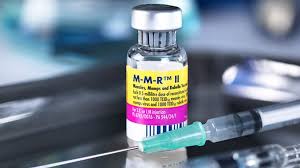What if I Can’t get the COVID-19 Vaccine Right Now?
If you are not immediately eligible for the COVID-19 vaccine or are afraid to get it, what else can you do? New research shows a vaccine in use for the last 50 years looks promising in the fight against COVID-19.
Medicine lives in patterns. To understand our modern problem, let’s look back 250 years.
In 1768, John Fewster, a country surgeon based in Thornbury, England and two colleagues, Hugh Grove and Daniel Sutton, began inoculating people against smallpox, a highly contagious, disfiguring, and deadly disease. Despite repeated exposure to smallpox, some patients seemed inexplicably immune. A farmer wondered if his natural resistance was related to another infection, “I have had the Cow Pox lately to a violent degree, if that’s any odds.”
Cowpox was a viral infection contracted by humans through contact with cow udders while milking. It turns out all of those “naturally immune” to smallpox had been previously afflicted with cowpox, which protected against smallpox infection. In fact, that farmers’ fortunate observation exposed a pattern which facilitated development of a vaccine which eradicated smallpox from the world.
In March 2020, Jeffrey E. Gold, a data analyst, thought it was interesting that children were relatively spared from severe COVID-19 disease. He wondered whether a specific intervention, like vaccination, protected them. Whereas, the COVID-19 death rate climbs quickly after 50. CDC statistics reveal 97% of COVID-19 deaths have occurred in those aged 45 and older. The timing of one vaccine in particular, the MMR vaccine—against measles, mumps, and rubella—seemed to best fit the bill. First introduced in 1971, most recipients fall into the under 50 age group.
Looking deeper, Gold found that a number of countries with low COVID-19 death rates had conducted large-scale measles-rubella vaccination campaigns over the last few years. For instance, physicians in American Samoa vaccinated nearly 90% of the population with MMR, including children and adults, during a widespread measles outbreak in September 2019. American Samoa has seen just 3 cases of COVID-19—all contracted outside the country—and no deaths from the virus. Whereas, COVID-19 penetration seemed far more extensive in countries with lower MMR vaccination rates, like Italy. Due to public mistrust in vaccines, following the publication of Andrew Wakefield’s fraudulent research linking the MMR vaccine an autism in 1998, Italy’s measles vaccine coverage was one of the lowest in Europe.
Though, these associations might just be coincidental.
But then there is this. Like SARS-CoV-2, measles, mumps and rubella viruses are also RNA viruses with spike proteins. The spike proteins on the measles, mumps and rubella viruses share 30% of their protein structure with the SARS-CoV-2 spike protein. The reason I am telling you this is because the degree of similarity might cause the body to “think” COVID-19 is related to measles, mumps, or rubella virus and therefore, fight it pre-emptively.
A preliminary study, recently published by the American Society of Microbiology, lends support that the MMR vaccine could protect against severe COVID-19 disease. Fifty people, previously vaccinated with MMR, had their mumps antibody blood levels (titers) analyzed. Participants were grouped according to severity of COVID-19 infection and levels of mumps titers in their blood. All of the asymptomatic COVID-19 patients had high mumps titers. All who were hospitalized and required oxygen had extremely low mumps titers.
To look at this another way, what if eating bananas prevented headaches? Researchers would ask 50 people to track banana intake and headache frequency for a month. Imagine if all those who ate the most bananas had no headaches, all who ate 10 bananas reported mild headaches, and all participants who ate no bananas had severe headaches? While bananas might be completely unrelated to headache frequency, this kind of relationship between two variables, during a viral pandemic, is the stuff from which dreams are made.
Effectively, that’s what may be happening with the MMR vaccine: those who get the shot seem to avoid the worst consequences of the virus.
If we return to the mumps study for a moment, there is one more striking finding. One-fifth of the group reported exposure to household contacts who had active symptoms of COVID-19, yet never developed evidence of infection. They could be “naturally immune”—like the Thornbury farmer was to smallpox. Since receiving an additional MMR booster is not harmful, ironically, I received an MMR shot in September 2019 after inadvertent exposure to measles in my clinic. This might explain why I did not get sick with Covid last February, despite being exposed to a handful of patients with unexplained coughing and shortness of breath who now have evidence of COVID-19 antibodies in their blood.
While this study is not definitive, I am not alone in my excitement about the possibility that MMR protects against severe COVID-19 disease. In August 2020, The Bill and Melinda Gates Foundation funded a randomized, placebo-controlled trial with 30,000 participants, to assess the effectiveness of MMR II in preventing COVID-19 in healthcare workers.
This column is in no way intended to suggest the MMR vaccine is an alternative to the COVID-19 vaccine, however for those who are not at the front of the line, the information might be worth a second look. To me, the study findings were so remarkable that I sent my 78-year-old mother to get her first MMR the very next day.
